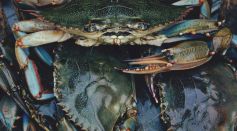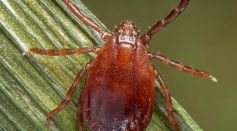Tags: Invasive species

Invasive Green Crabs Turned Into a $65 Whiskey as a Unique Way to Help Reduce Their Population

Oral Contraceptives Can Be Used to Limit Gray Squirrel Population in United Kingdom Without Killing Them [Study]

Invasive Earthworms Behind the Striking Decline of Insects in North American Forests, Study Claims

Invasive False Widow Spider Captures, Feeds on Very Large Mammals Like Bats in the UK
European Green Crab Showed Extensive Dispersal Despite High Gene Flow, Low Genetic Diversity
Lack of Natural Predators Turns Overly Poisonous Cane Toads Into Cannibals, Become Invasive Species
Native Wildlife Defend Their Territory From Invasive Species Documented in New Study

Donkeys Unexpectedly Help Save Lives in the Desert, New Study Reveals
Tropical Clawed Frogs Invade Southern Florida: Could Potentially Spread Diseases on Native Amphibians

Invasive Mosquito Species Discovered in South Florida, an Aggressive Biter
Kangaroo Overgrazing Has Adverse Effect on Land Conservation
Australian White-Spotted Jellies Spotted Off the Coast of Myrtle Beach, South Carolina
Researchers Find a New Species of Gall Wasp - A Possible Parasite of a Parasite
Genetic Study of Honeybees May Help Beekeepers Breed Species for Desirable Traits
Invasive Jellyfish Species from Australia Was Recently Spotted in North Carolina Beaches

Flour Beetle Experiment Represents How Ecology is Affected By Invasive Species and Shifting Habitats
Florida Hunters Catch a Record-Breaking 18-foot Python

Researchers Predict the Movement of Invasive Species Around the Globe by 2050

Two Exotic Disease-Carrying Ticks Had Just Been Identified in Rhode Island
Airborne Seeds Pose Potential Risk of Non-Native Plant Invasions
Most Popular

Carbon Footprint 101: What It Is and Simple Ways to Reduce Yours

Solar vs Wind vs Hydro Energy: Which Renewable Energy Is Most Effective Power Source?

How Satellite Technology and Earth Observation Are Transforming Modern Life

Viruses vs Bacteria: Key Differences, How They Spread, and How We Treat Them





